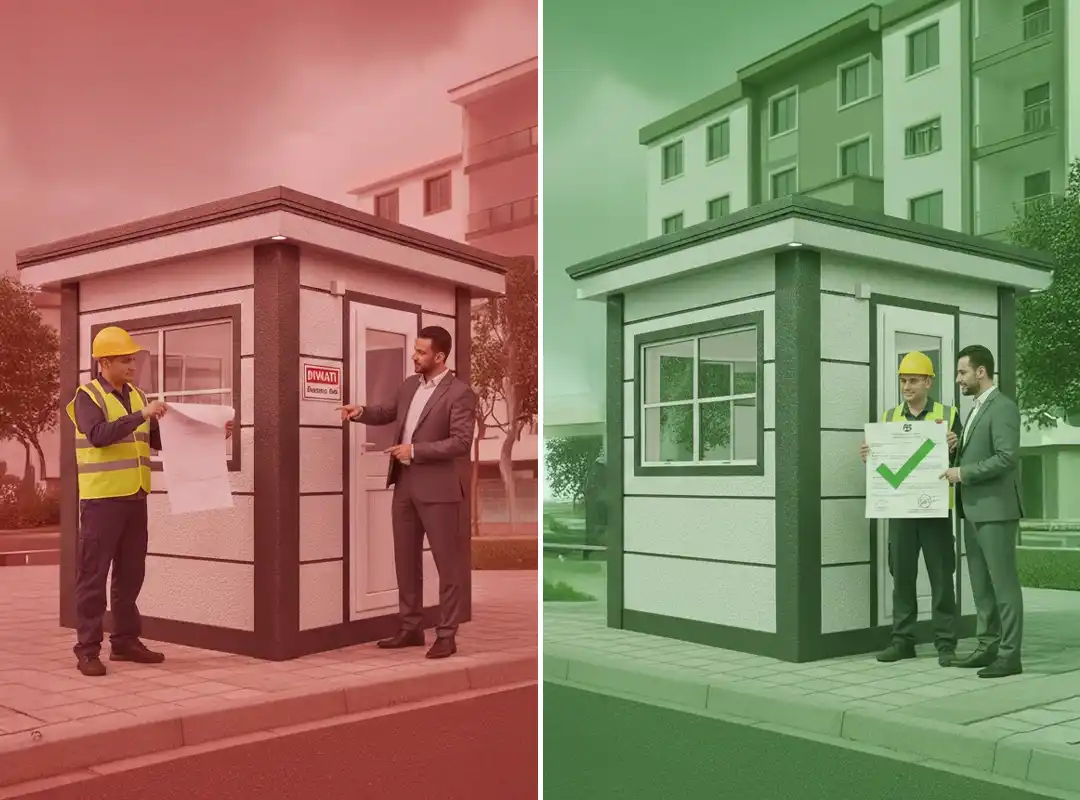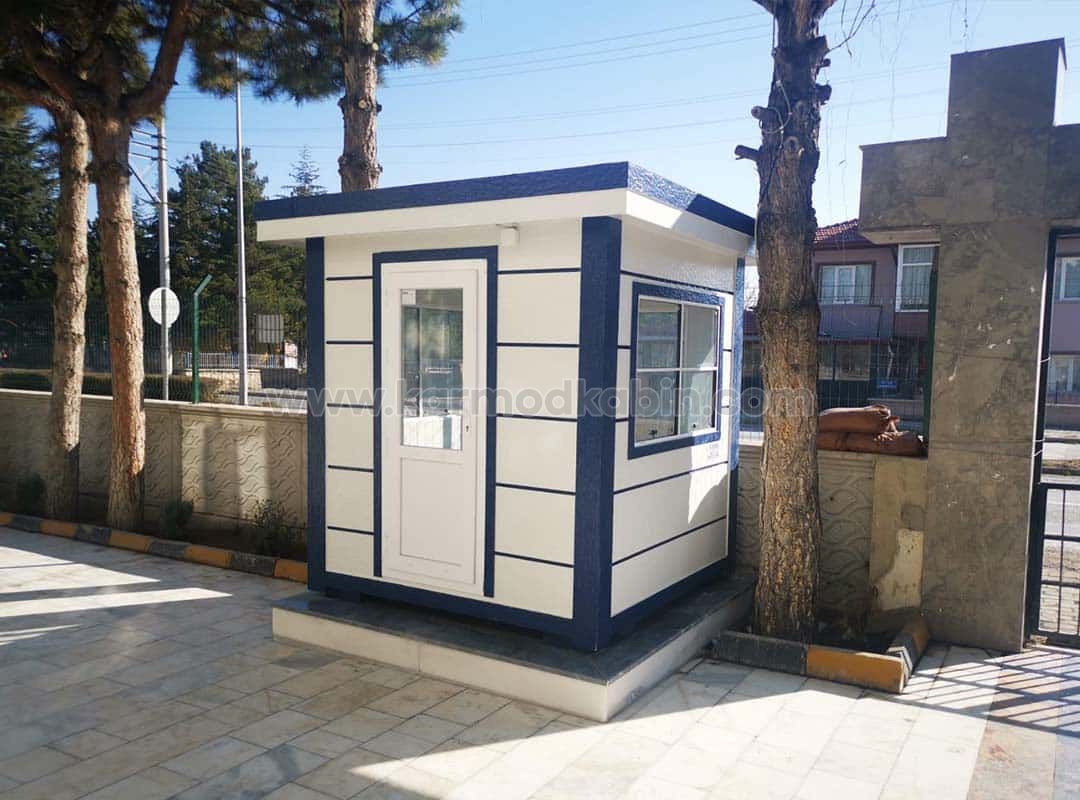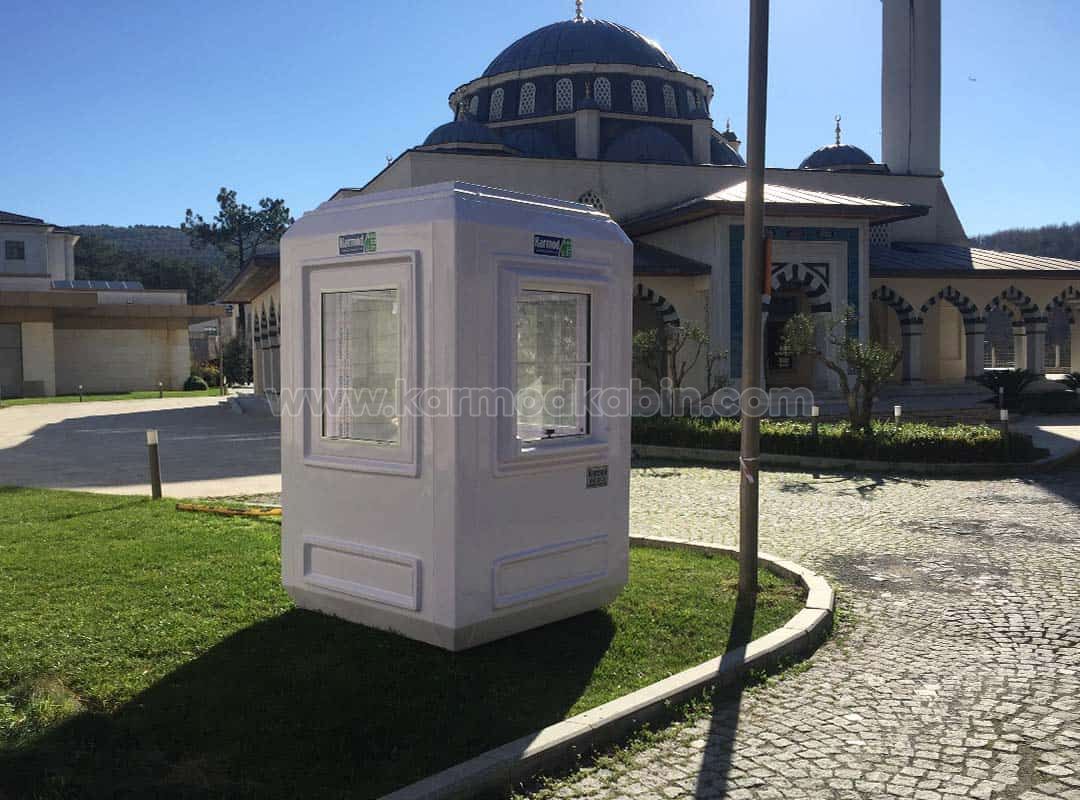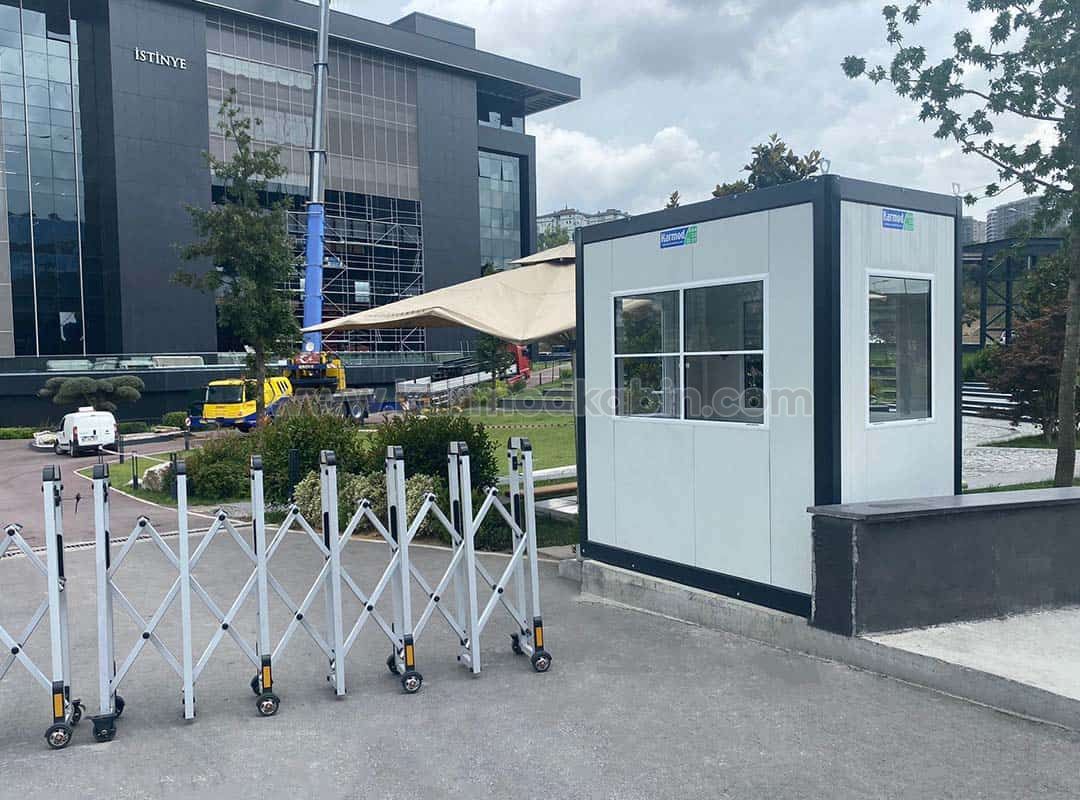
Security cabins have become indispensable components of modern infrastructure - from residential complexes and corporate facilities to industrial sites and public institutions. They provide safety, control, and visibility at entry points, making them a fundamental part of property management and access regulation. However, one common question arises before installation: do you need official permission to build a security cabin?
Understanding the legal and practical aspects of building permissions is essential before investing in a security cabin. Regulations differ from one region to another, and many factors - such as cabin size, material type, and intended use - can influence whether a permit is required. This guide will walk you through everything you need to know about security cabin permissions, helping you make a confident and compliant investment for your site.
Security cabins are compact, prefabricated structures designed to provide a safe, controlled workspace for security personnel. Typically positioned at the entrances of residential complexes, factories, schools, or commercial sites, these cabins allow guards to monitor access, manage visitor entry, and ensure property safety. They come in various sizes and configurations - from single-person booths to multi-functional control units equipped with technology for surveillance and communication.
The importance of security cabins goes far beyond providing a simple shelter. They symbolize order and protection, acting as the first line of defense against unauthorized access. In high-traffic environments, they enhance operational efficiency by organizing entry procedures and providing comfort for staff who work long hours outdoors. Whether constructed from steel, insulated panels, or modular materials, these cabins combine durability with flexibility - making them a smart investment for modern facilities that prioritize both security and professionalism.
Security cabins today are available in a wide range of styles and specifications to meet different operational needs. Their design depends largely on where they will be used - residential sites often prefer compact models, while industrial or commercial facilities need more advanced units with integrated systems. The key is to balance practicality, comfort, and visual harmony with the overall architecture of the property.
Here are some of the most common types of security cabins used in modern projects:
By understanding which type fits your site best, you can make a more strategic investment - ensuring that your cabin not only enhances security but also aligns with your operational goals.
Before determining whether a security cabin requires a building permit, it’s important to understand how local authorities legally define a “structure.” In most regions, a structure is considered any built or assembled element that is fixed to the ground and serves a functional purpose - whether for habitation, storage, or commercial use. This definition may include both permanent and semi-permanent units, depending on their installation method and duration of use.
Security cabins often fall into a gray area between permanent buildings and portable installations. If the cabin is connected to utilities like electricity or plumbing, anchored to a concrete base, or intended for long-term use, many municipalities classify it as a “structure” that needs formal approval. However, temporary cabins placed on non-permanent foundations might be exempt. Because the legal definition can vary, verifying the specific criteria in your region is essential before starting any installation or purchase.

In most regions, whether you need a building permit for a security cabin depends on its purpose, permanence, and location. If your cabin is a small, prefabricated structure placed temporarily on your property without a permanent foundation, it’s often classified as a temporary installation - meaning no full building permit is required. However, if the cabin includes electrical wiring, plumbing, or long-term anchoring to the ground, local authorities may require a formal construction permit or inspection before use.
The best way to determine if your project qualifies for an exemption is to consult your local building authority or municipal zoning office. Regulations may differ between cities or regions, and sometimes even within the same jurisdiction. Some industrial or residential zones have strict appearance or safety requirements, while others are more flexible. Consulting early ensures your investment remains fully compliant and avoids potential fines or removal orders later on.
Not all security cabins require formal permission - in many situations, you can install them without dealing with complex paperwork. Generally, temporary or movable cabins that are not permanently fixed to the ground and do not alter the existing infrastructure are exempt from most construction permits. These cabins are ideal for construction sites, parking areas, festivals, or temporary business premises, where flexibility and speed are top priorities.
Some examples where you typically don’t need a building permit include:
However, even in these cases, it’s still important to confirm with local authorities, as regulations can differ based on size, location, and duration of use. When in doubt, a quick consultation can prevent future complications or costly relocations.
Whether your security cabin requires a permit often depends on a few key factors - primarily its size, location, and intended purpose. These elements help authorities determine if the cabin poses any structural, environmental, or zoning implications. For example, a compact, mobile guard booth in a private parking area may not require approval, while a larger, permanently connected cabin used for administrative or commercial functions likely will.
Location plays an equally crucial role. Cabins placed near public roads, utility lines, or shared boundaries often fall under stricter regulations due to potential safety and access concerns. Likewise, the intended use of the cabin matters - a security post for a temporary event is treated differently from a 24/7 monitoring unit in an industrial zone. Understanding these nuances allows property owners to plan strategically and avoid unnecessary delays or penalties.
Main factors influencing permit requirements include:
By evaluating these points before purchase, you can ensure your investment aligns with legal expectations and long-term site functionality.
Building regulations for security cabins can differ widely depending on your country, region, and even municipality. In some areas, prefabricated or modular structures fall under temporary installation regulations, while in others, they are categorized as permanent constructions that require full permits and safety inspections. Local governments typically evaluate cabins based on factors like structural stability, fire resistance, and connection to public utilities. These standards ensure that even small, portable cabins meet minimum safety and environmental criteria.
At the national level, broader construction and zoning laws come into play. Many countries have standardized codes that define what constitutes a “movable structure” and outline how such buildings must comply with fire, electrical, and accessibility standards. Additionally, coastal or high-risk zones might have extra conditions related to wind resistance, corrosion protection, or flood safety. Before installation, it’s always wise to review both regional and national laws to avoid future legal issues. Working with an experienced manufacturer familiar with compliance can also make the process much smoother and stress-free.

If your security cabin falls into a category that requires a building permit, preparing the correct documentation in advance will help streamline the process. Each municipality or building authority may ask for slightly different materials, but the purpose remains the same - to confirm that your structure is safe, compliant, and properly located. Submitting complete and accurate documents at the start prevents delays and helps ensure your project is approved without complications.
Authorities generally want proof that your cabin meets safety, zoning, and environmental standards. Depending on your location and the nature of your installation, you may need several types of approvals before construction or placement begins.
Common documents and approvals include:
Working closely with your supplier or contractor during this stage ensures all technical and compliance details are properly documented - saving both time and unnecessary back-and-forth with authorities.
Applying for a construction permit for a security cabin is generally a straightforward process if you follow the right steps and prepare the required documentation. Start by contacting your local building or zoning authority to confirm the exact requirements for your area - as regulations often vary by municipality. Once you understand the criteria, you’ll typically need to submit an application that includes a site plan, technical drawings, and proof of property ownership or authorization. Depending on the location, some authorities may request additional certifications for fire safety, insulation, or environmental impact.
After submission, the approval process usually takes anywhere from a few days to several weeks. Inspectors may review the plans to ensure the proposed cabin complies with safety, accessibility, and urban planning standards. If all documents meet the required conditions, you’ll receive a written permit allowing installation. In some cases, you might be required to schedule an on-site inspection after the cabin is placed to verify proper installation. Partnering with a professional prefab manufacturer can significantly simplify this process, as they are often experienced in handling local regulations and can assist with documentation, drawings, and approvals efficiently.
Even when your security cabin project seems simple, small mistakes or missing details can lead to unexpected approval delays. The key to a smooth process lies in early preparation and clear communication with local authorities. Always start by confirming whether your cabin qualifies as a temporary or permanent structure, as this classification determines which documents are needed. Submitting incomplete or inaccurate plans often leads to revisions - and every revision adds days or even weeks to your approval timeline.
Another effective strategy is to work with manufacturers experienced in compliant prefab structures. They usually know what documentation is necessary, what inspectors look for, and how to design cabins that meet technical standards from the start. This proactive approach ensures your project runs efficiently and helps avoid unnecessary obstacles.
Here are a few simple ways to prevent delays:
A bit of preparation upfront not only accelerates your project but also saves time, money, and stress in the long run.
Safety and compliance are non-negotiable aspects when installing a security cabin, regardless of whether it’s temporary or permanent. Local authorities require that all prefabricated or portable structures meet specific structural integrity and fire safety standards to protect both occupants and surrounding areas. This includes ensuring the cabin can withstand wind loads, temperature variations, and heavy usage. High-quality materials such as galvanized steel, insulated sandwich panels, and fire-retardant coatings are preferred for durability and safety. Additionally, cabins must comply with basic electrical and ventilation codes, especially if they include lighting, heating, or air-conditioning systems.
Another critical factor is occupational safety compliance. If the cabin is used by security personnel for long hours, it must provide adequate space, proper insulation, ergonomic design, and ventilation to meet health and safety regulations. Some regions even require cabins to be certified for accessibility under occupational laws. Working with certified manufacturers ensures that every part of your cabin - from wall thickness to door locks - meets recognized safety standards, reducing legal risks and ensuring the comfort of your staff.

Installing a security cabin may seem simple, but small oversights during setup can lead to major issues later - both legally and structurally. One of the most common mistakes is placing the cabin without confirming zoning or boundary restrictions, which can result in penalties or forced relocation. Another frequent error is skipping the foundation preparation. Even if your cabin is portable, uneven or unstable ground can cause misalignment, water leakage, or door malfunction over time. Ensuring a stable, level surface before installation significantly extends the cabin’s lifespan and prevents safety hazards.
Another problem occurs when buyers neglect electrical and drainage planning. If your security cabin includes lighting, air conditioning, or surveillance equipment, these systems must be properly connected and grounded. Improper installation can not only void your warranty but also create fire risks or regulatory violations. Always make sure that your cabin is installed by qualified professionals who follow both manufacturer and local code requirements.
Avoid these common installation mistakes:
Avoiding these mistakes ensures your investment remains compliant, durable, and fully functional from day one.
Navigating permits, regulations, and installation details can feel overwhelming - especially if it’s your first time purchasing a security cabin. Partnering with a professional manufacturer eliminates that complexity entirely. Experienced suppliers understand both the technical specifications and legal frameworks surrounding prefabricated structures, ensuring your cabin is designed, produced, and installed in full compliance with local requirements. From providing architectural drawings for permit applications to managing on-site setup, a reliable manufacturer acts as your all-in-one project partner.
Choosing a professional team also means gaining access to customized, high-quality solutions. Instead of dealing with generic models that may not fit your property or regulations, you receive a security cabin built to meet your exact needs - size, insulation, durability, and aesthetic preferences included. Moreover, certified manufacturers often provide long-term warranties, ensuring your investment remains protected. With expert guidance, the entire process - from design to approval - becomes faster, smoother, and completely stress-free.
Today’s prefabricated security cabins go far beyond basic functionality - they combine modern design, ergonomic comfort, and full regulatory compliance in one efficient structure. Manufacturers now use advanced materials such as insulated sandwich panels, galvanized steel frames, and energy-efficient cladding systems that meet fire and structural standards. These cabins are engineered not only to withstand harsh climates but also to align with evolving safety and zoning regulations, ensuring your installation passes any required inspection with ease.
Aesthetically, modern security cabins can be customized to match the architectural style of your site, creating a professional and cohesive appearance. Whether for a residential complex, commercial plaza, or industrial facility, today’s models integrate features like large observation windows, climate control, and smart monitoring systems. By choosing a compliant prefabricated solution, you gain both peace of mind and long-term value - a durable, visually appealing structure that enhances your property’s security and reflects your brand’s professionalism.
Building a security cabin should never be complicated - and with our professional team, it isn’t. We specialize in designing and manufacturing high-quality, fully compliant security cabins that meet all legal and structural standards. From documentation support to on-site installation, our experts manage every step of the process, ensuring your project is completed quickly, safely, and within regulation. Whether you need a compact guard booth or a large modular control cabin, we deliver durable, functional, and visually refined solutions tailored to your exact needs.
When you choose our company, you’re not just buying a security cabin - you’re investing in peace of mind. Our experienced engineers ensure compliance with regional regulations, while our production team guarantees superior material quality and finishing. Let us take care of the technicalities so you can focus on running your business securely and efficiently.
Ready to install a reliable, regulation-compliant security cabin? Contact our team today and let’s start building the perfect solution for your site.